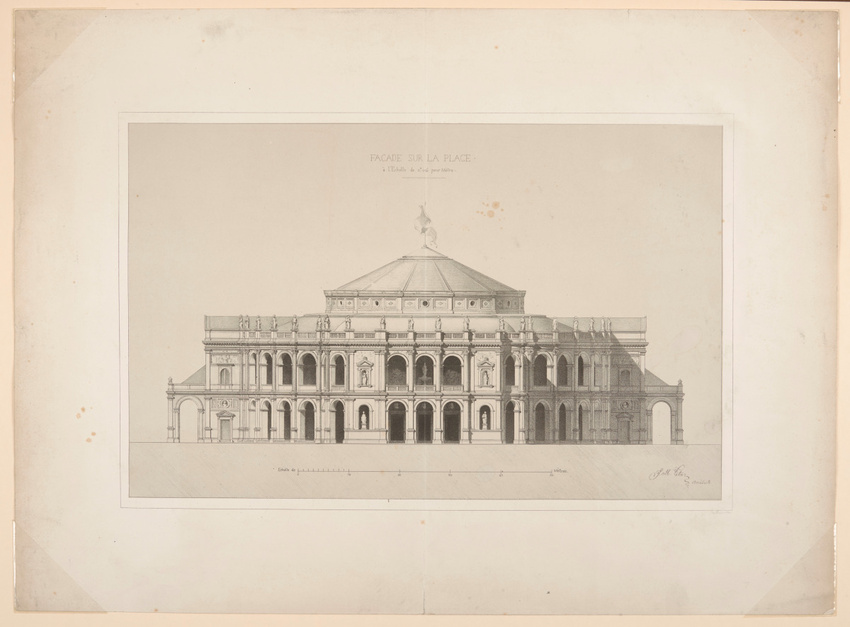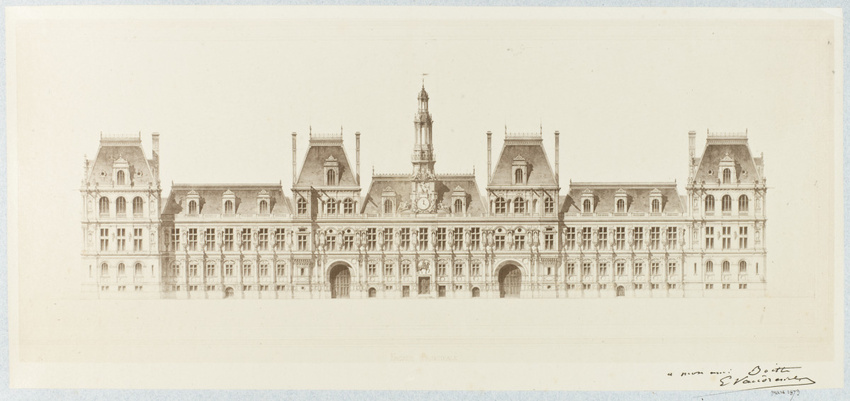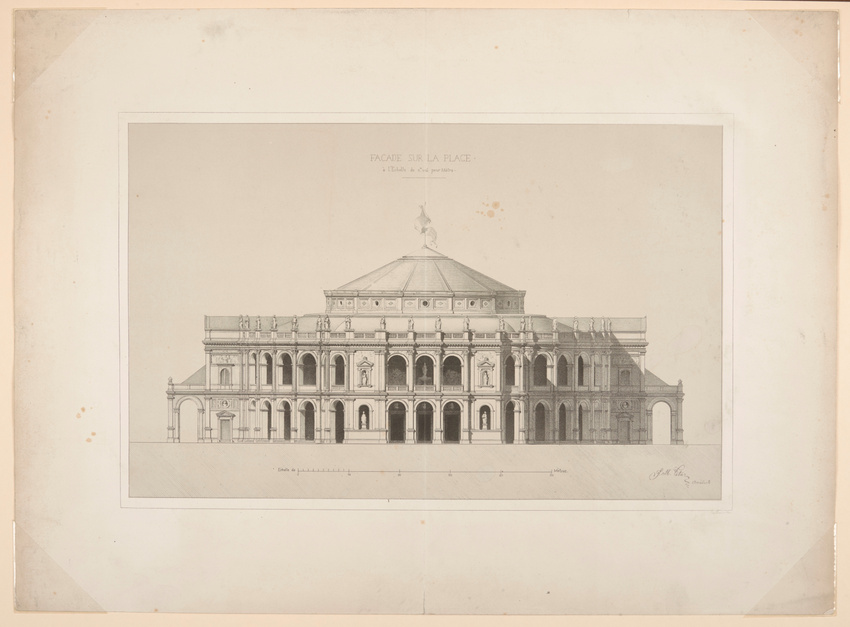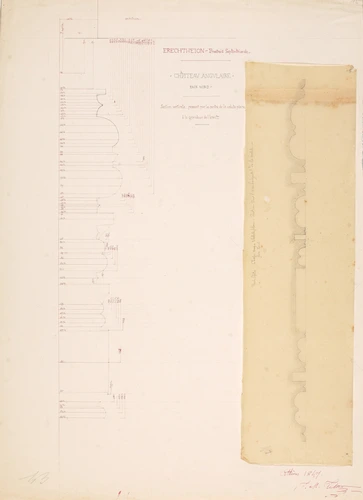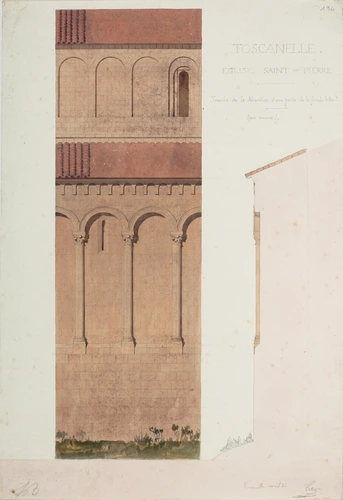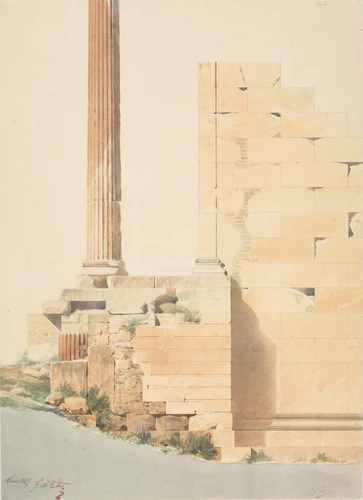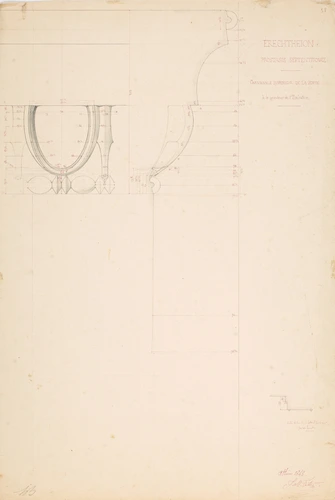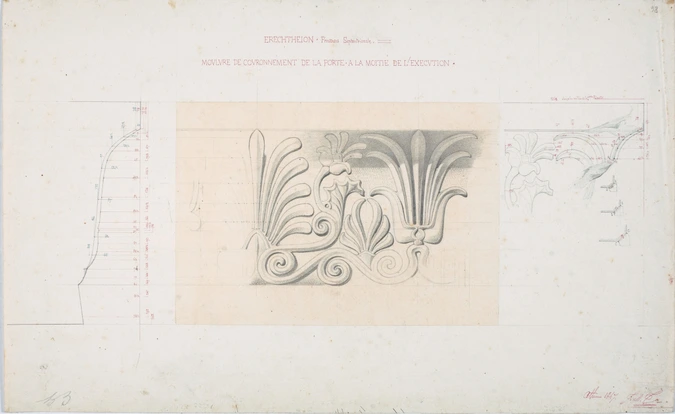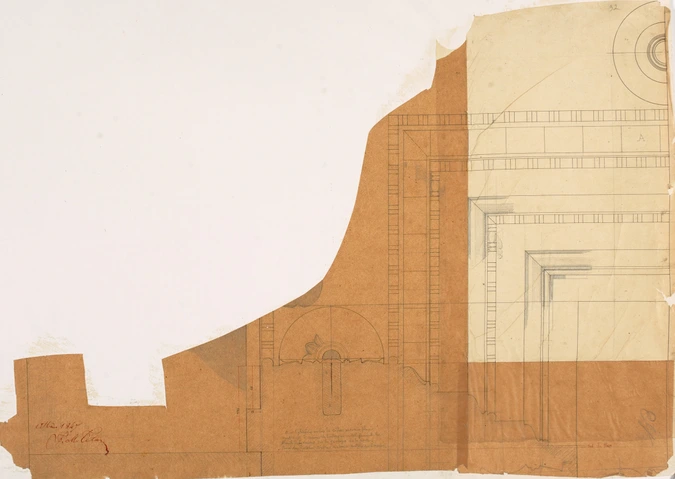France, Paris, Opéra : façade principale, signé J.M. Tetaz
From 1821 until it was destroyed by fire in 1873, the Paris Opera House was situated in rue Le Peletier, in the 9th arrondissement. The shortcomings of the theatre generated many proposals, well before the famous competition won by Charles Garnier in 1861. Jacques Martin Tetaz produced his design in May 1858, and published it the following August, just after the assassination attempt by Orsini who, on 14 January 1858, had thrown several explosive devices at Napoleon III in front of the Opera in rue Le Peletier. This event prompted the Emperor to reconstruct the building two years before Haussmann decided to create a new opera house on the boulevard des Capucines. Tétaz, a winner of the Grand Prix de Rome and city architect, responsible for the château de Pau that Napoleon III rated very highly, could have had some claim to this commission, and exhibited this design at the 1859 Salon.
His proposal was utopian in the literal sense of the word since it was not destined for a specific place. It was distinguished by the strong emphasis on the rooms and their functions, resulting in a certain lack of architectural unity. Thus, the Gazette des beaux-arts considered the project "a little complicated in its main elements" and thought that "it could have been more imposing and offer the eye more nobles lines".
Although this engraving lacks monumentality, especially in comparison with Garnier's building, Tetaz, who put forward a new proposal for an opera house in the 1861 competition, nonetheless thought it sufficiently important to make a gift of it to one of his colleagues, the architect Louis Boitte.
